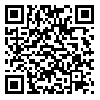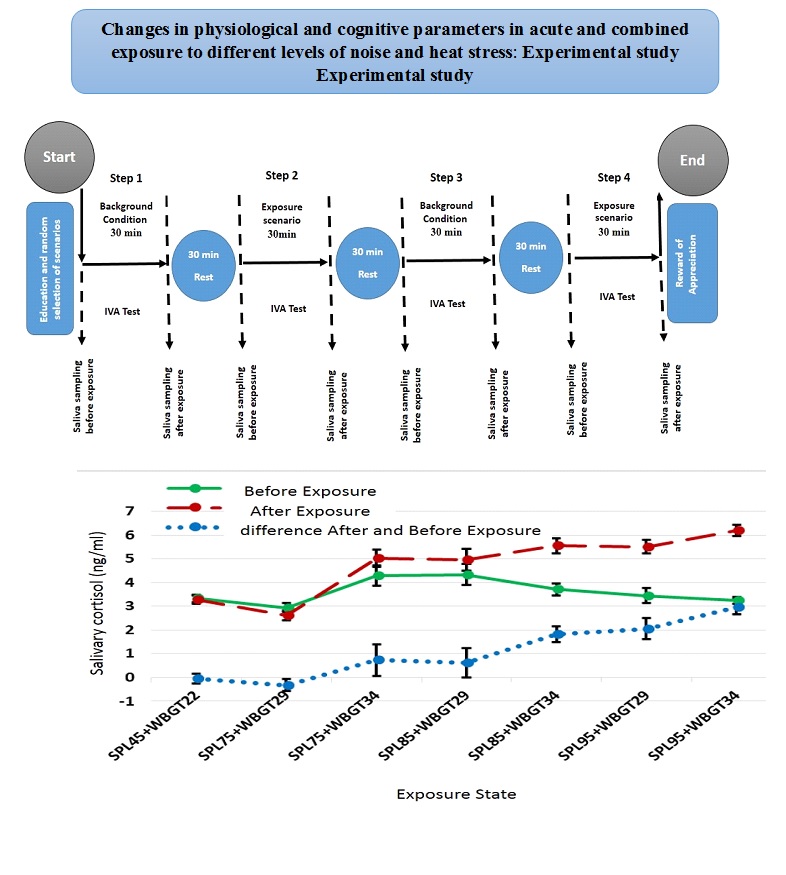Volume 13, Issue 3 (9-2023)
J Health Saf Work 2023, 13(3): 563-580 |
Back to browse issues page
Download citation:
BibTeX | RIS | EndNote | Medlars | ProCite | Reference Manager | RefWorks
Send citation to:



BibTeX | RIS | EndNote | Medlars | ProCite | Reference Manager | RefWorks
Send citation to:
Mohammadian F, Fallahati M, Abbasi M, Zokaei M. Changes in physiological and cognitive parameters in acute and combined exposure to different levels of noise and heat stress: Experimental study. J Health Saf Work 2023; 13 (3) :563-580
URL: http://jhsw.tums.ac.ir/article-1-6879-en.html
URL: http://jhsw.tums.ac.ir/article-1-6879-en.html
1- Environmental Health Research Center, Research Institute for Heath Development, Kurdistan University of medical Science, Sanandaj, Iran
2- Associate Professor saveh universty, of medical scences, Social Determinats of Health Research Center, Saveh University of Medical Sciences, Saveh, Iran.
3- Assisstant professor saveh universty, of medical scences, Social Determinats of Health Research Center, Saveh University of Medical Sciences, Saveh, Iran.
4- Assisstant professor saveh universty, of medical scences, Social Determinats of Health Research Center, Saveh University of Medical Sciences, Saveh, Iran. ,Mzokaei2011@gmail.com
2- Associate Professor saveh universty, of medical scences, Social Determinats of Health Research Center, Saveh University of Medical Sciences, Saveh, Iran.
3- Assisstant professor saveh universty, of medical scences, Social Determinats of Health Research Center, Saveh University of Medical Sciences, Saveh, Iran.
4- Assisstant professor saveh universty, of medical scences, Social Determinats of Health Research Center, Saveh University of Medical Sciences, Saveh, Iran. ,
Abstract: (1102 Views)
Introduction: Many industries have multiple factors harmful to health, leading to simultaneous exposure of these factors to each other. Noise is one of the most common physical parameters in the work environment. On the other hand, heat is also increasing due to various energy processes in industries. Therefore, this study was conducted with the aim of determining changes in physiological parameters and visual-auditory attention in acute exposure to heat and noise.
Material and Methods: In this experimental study, 72 individuals (36 men and 36 women) aged between 23 and 33 years participated according to the inclusion criteria. In total, 12 different test modes were performed (3 temperature levels and 4 noise pressure levels). The test was conducted for each person in 4 steps during a specific day. The duration of exposure to each condition was half an hour, and a half-hour rest was given between each test condition. Saliva samples of each subject were collected before and immediately after exposure to noise and heat. Also, The Integrated Visual and Auditory (IVA) was recorded by the participants simultaneously.
Results: The results of combined exposure to noise and heat on visual and auditory attention showed that only two modes of combined exposure, SPL95+WBGT34 and SPL95+WBGT29, caused a significant increase (P < 0.05) in mental workload and a significant decrease (P < 0.05) in visual and auditory attention. In addition, the results showed that independent exposure to noise at the levels of 85 and 95 dB and exposure to heat at higher temperature levels of 34 and 29 degrees Celsius cause a significant increase (P < 0.05) in salivary cortisol after exposure. The results of the effect of combined exposure to noise and heat on salivary cortisol showed that three experimental modes of combined exposure (SPL85+WBGT34, SPL95+WBGT29, and SPL95+WBGT34) caused a noticeable and significant (P<0.001) increase in salivary cortisol.
Conclusion: Indeed, salivary cortisol can be recommended as a physiological index to evaluate noise and heat exposure. It’s also noteworthy that salivary cortisol is more affected by noise and heat exposure than cognitive performance.
Material and Methods: In this experimental study, 72 individuals (36 men and 36 women) aged between 23 and 33 years participated according to the inclusion criteria. In total, 12 different test modes were performed (3 temperature levels and 4 noise pressure levels). The test was conducted for each person in 4 steps during a specific day. The duration of exposure to each condition was half an hour, and a half-hour rest was given between each test condition. Saliva samples of each subject were collected before and immediately after exposure to noise and heat. Also, The Integrated Visual and Auditory (IVA) was recorded by the participants simultaneously.
Results: The results of combined exposure to noise and heat on visual and auditory attention showed that only two modes of combined exposure, SPL95+WBGT34 and SPL95+WBGT29, caused a significant increase (P < 0.05) in mental workload and a significant decrease (P < 0.05) in visual and auditory attention. In addition, the results showed that independent exposure to noise at the levels of 85 and 95 dB and exposure to heat at higher temperature levels of 34 and 29 degrees Celsius cause a significant increase (P < 0.05) in salivary cortisol after exposure. The results of the effect of combined exposure to noise and heat on salivary cortisol showed that three experimental modes of combined exposure (SPL85+WBGT34, SPL95+WBGT29, and SPL95+WBGT34) caused a noticeable and significant (P<0.001) increase in salivary cortisol.
Conclusion: Indeed, salivary cortisol can be recommended as a physiological index to evaluate noise and heat exposure. It’s also noteworthy that salivary cortisol is more affected by noise and heat exposure than cognitive performance.
Type of Study: Research |
Received: 2023/09/30 | Accepted: 2023/09/23 | Published: 2023/09/23
Received: 2023/09/30 | Accepted: 2023/09/23 | Published: 2023/09/23
Send email to the article author
| Rights and permissions | |
 |
This work is licensed under a Creative Commons Attribution-NonCommercial 4.0 International License. |






